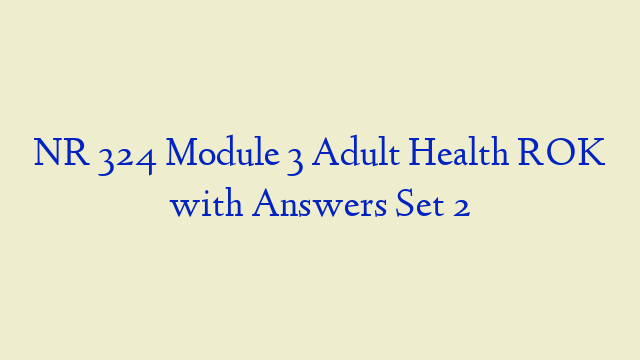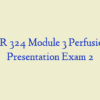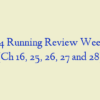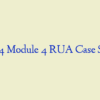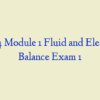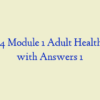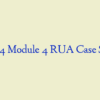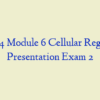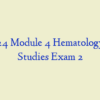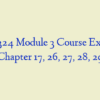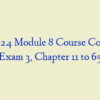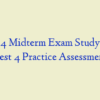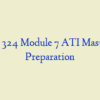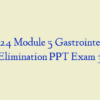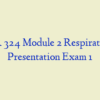Description
NR 324 Module 3 Adult Health ROK 2
- Describe the purpose, normal range, significance of results, and nursing responsibilities for these hematological diagnostic and clotting studies: (hemoglobin, Hematocrit, WBC, Total RBC, Platelet count, activated clotting time (ACT), PT, and INR, Lipid profile (cholesterol, LDL, HDL), BUN and Creatine (How abnormal values relate to HTN and Heart failure), Troponin, BNP.
- Define anemia, general common clinical manifestations and priority nursing care for this disorder.
- Identify the etiologies, clinical manifestations, and collaborative management for the following anemias. (Iron-deficiency, Thalassemia, Pernicious, and Folic Acid Deficiency).
- Describe Sickle Cell Disease, common clinical manifestations, complications, priority nursing management and teaching regarding this disease.
- Differentiate between Polycythemia and Thrombocytopenia (common causes, clinical signs and nursing management for both.
- What is the treatment and nursing management for Polycythemia?
- Describe the types, clinical manifestations, and nursing and collaborative management on Hemophilia and von Willebrand disease.
- Explain acute hemarthrosis and the nursing management and teaching involved with this condition.
- Describe Neutropenia, clinical manifestations, and nursing management of this disorder. What is the primary teaching for this disorder?
- What are the nursing responsibilities for a bone marrow biopsy, and what client education should be given about this diagnostic procedure?
- Describe the RN responsibility in administering a blood transfusion.
- Explain the nursing responsibility in the event on a blood transfusion reaction.
- Give the purpose, nursing responsibilities, and client education for the following Cardiovascular diagnostic tests. (Chest X-Ray, 12-Lead EKG, TEE, Cardiac catheterization)?
- Identify the classification of Hypertension/Essential. (Normal, Prehypertension, Hypertension stage I, Hypertension stage II.
- Describe orthostatic blood pressure, nursing management and teaching for this disorder.
- Describe the collaborative care for HTN, (Lifestyle modifications (activity, nutrition), Drug therapy (Common drugs) and nursing management.
- What is a DASH diet, and the major teaching that surrounds this diet.
- Differentiate between CAD, Angina, and acute coronary syndrome (ACS), and their clinical manifestations.
- Describe the nursing role in the promotion of therapeutic lifestyle changes in patients at risk for CAD.
- Differentiate between right side and left side heart failure, their clinical manifestations.
- Describe myocarditis, clinical signs and nursing teaching regarding this disorder.
- Describe ventricular fibrillation and the acute management for this condition?
- What important teachings should be discussed with a client with heart failure? nr 324 module 3
- Describe Rheumatic Heart Disease, and the clinical manifestations associated with it?
- What important teachings should the nurse include for clients with rheumatic heart dx.?
- Describe the management, and teaching of patients with pacemakers and implantable cardioverter-defibrillators.
- Explain Myocardial Infarction, and the clinical manifestations of this disorder.
- Describe Mitral Valve prolapse, clinical manifestations, and client education associated with this disorder.
- Describe complete heart block, and the management for this condition.
- What is the acute nursing care and treatment for clients suffering from a MI?
- Describe the complications of an MI.
- What are the major patient education and discharge instructions that should be discussed with post MI clients?
- Describe Peripheral artery disease, the clinical assessment, diagnostic procedures, and treatment regarding this disorder.
- Describe venous insufficiency, clinical assessment, and client teaching for this disorder. nr 324 module 3
- Explain Raynaud’s disease, the clinical manifestations, and client education for this disorder?
- Describe varicose veins and the clinical manifestations associated with this condition?
- Describe venous thrombus, clinical assessment, and risk factors associated with this dx.
- Differentiate between venous ulcers and arterial ulcers. Describe the clinical manifestations and nursing teaching regarding this condition.

